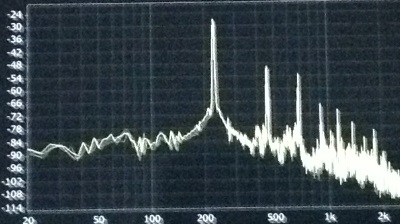Hi everyone.
I'm trying to model the theremin sound in software (using SuperCollider or Csound).
It's really surprising how hard it is to find any analysis of the theremin timbre, you find everywhere that it's just a sine wave when it doesn't sound anything like it.
I found this post http://theremin.tf/category/projets-2/open_theremin/ that explains a way to generate a waveform with brightness and waveform controls.
Unfortunately it doesn't take frequency and amplitude into account.
If someone can explain how the waveform changes with frequency and amplitude, that would be great. (if possible using simple mathematical expressions like the ones from that post, my electronics knowledge is a bit weak and most of the stuff you guys discuss here goes way over my head)
My intention is to create a sound for the Linnstrument (a 3d controller like the continuum), and I like the theremin timbre. I'm aware that, this won't replicate a theremin (and I don't want it too, I'm playing it polyphonically for one thing)
I tried contacting the author of that post but he hasn't answered yet.
Thank you.



